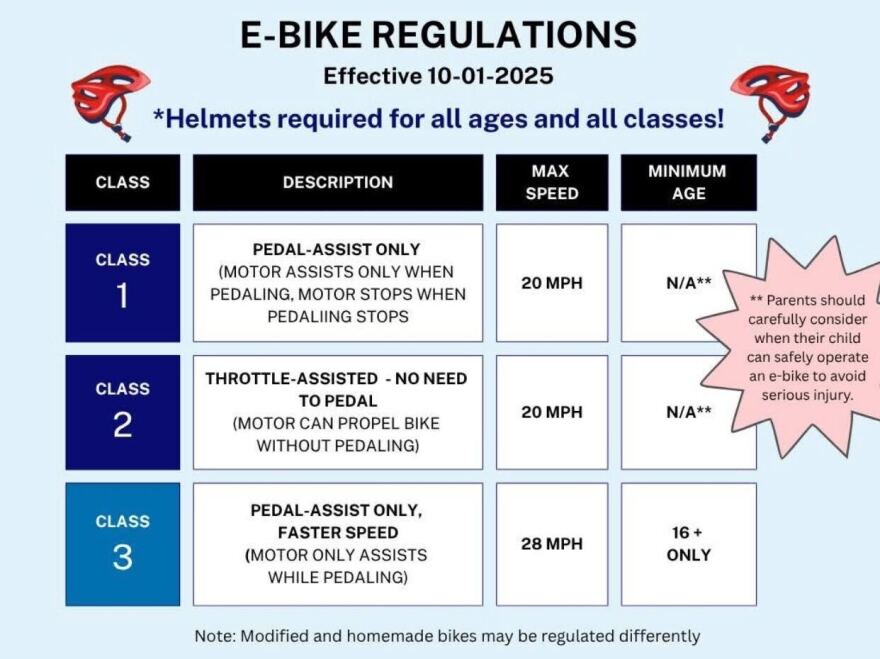Injuries from e-bikes and e-scooters are on the rise across Connecticut emergency departments, hospital data shows.
In May and June of 2024, the emergency department at Connecticut Children’s in Hartford treated three e-bike injuries.
This May and June, the emergency room treated 25.
At hospitals across the Yale New Haven Health network, “there have been 89 [e-bike and e-scooter injuries] over the past three years, with nearly one third of those in just the past year alone,” said Dr. Rakesh Mistry, medical director for emergency medicine, Yale New Haven Children's Hospital.
Kevin Borrup, executive director of the Injury Prevention Center at Connecticut Children’s, cautioned that speed is a factor in many e-bike accidents.

Parents should choose an e-bike that “requires you to pedal and then gives an electronic assist. So it limits how fast you can go,” he said.
But that may not be enough.
“What we're seeing are e-bikes that can, at times, be easily modified. So even if they are limited to 20 miles per hour, or some to 30 miles per hour, you can easily overcome those limiters,” he said.
But road safety experts say the onus to stay safe isn’t all on kids riding these bikes.
“It's best practice to provide separated bike lanes with concrete barriers or trees, something that separates the fast-moving vehicles from the kids riding bikes,” said Seth LaJeunesse of the Highway Safety Research Center at the University of North Carolina at Chapel Hill. “And when they have to cross the street, providing, maybe, elevated crosswalks.”
LaJeunesse pointed to Portland, Oregon; Minneapolis, Minnesota; and Boston, Massachusetts as examples of cities offering safe spaces for kids on e-bikes.
CT e-bike regulations to get a boost
An update to state e-bike laws goes into effect Oct. 1, and local police departments are spreading the word on social media. An advisory on the Fairfield Police Department page reads:
- E-bikes with no pedals and powered by over 750 watts but under 3,500 watts will now be defined as motor-driven cycles.
- A valid driver’s liscence will be required to operate those e-bikes (Class 1-3 will still not).
- E-bikes over 3,500 watts are expected to require registration and insurance, similar to motorcycles.
E-bikes are defined by class in Connecticut according to how the motor is engaged and by the bike’s top speeds.
Unlike with bicycles, e-bike riders in Connecticut are required to wear a helmet regardless of their age.
At the Glastonbury Riverfront recently, a helmet-clad Dominick Osorio, 15, was spotted with his fishing rod – enjoying a school-free summer day.
He said he lived in town, and rode over on his e-bike.
“All my friends have them and it’s just fun to learn how to ride, just the enjoyment of riding,” he said. “If I didn’t have my bike, I’d be playing video games and stay inside more.”





